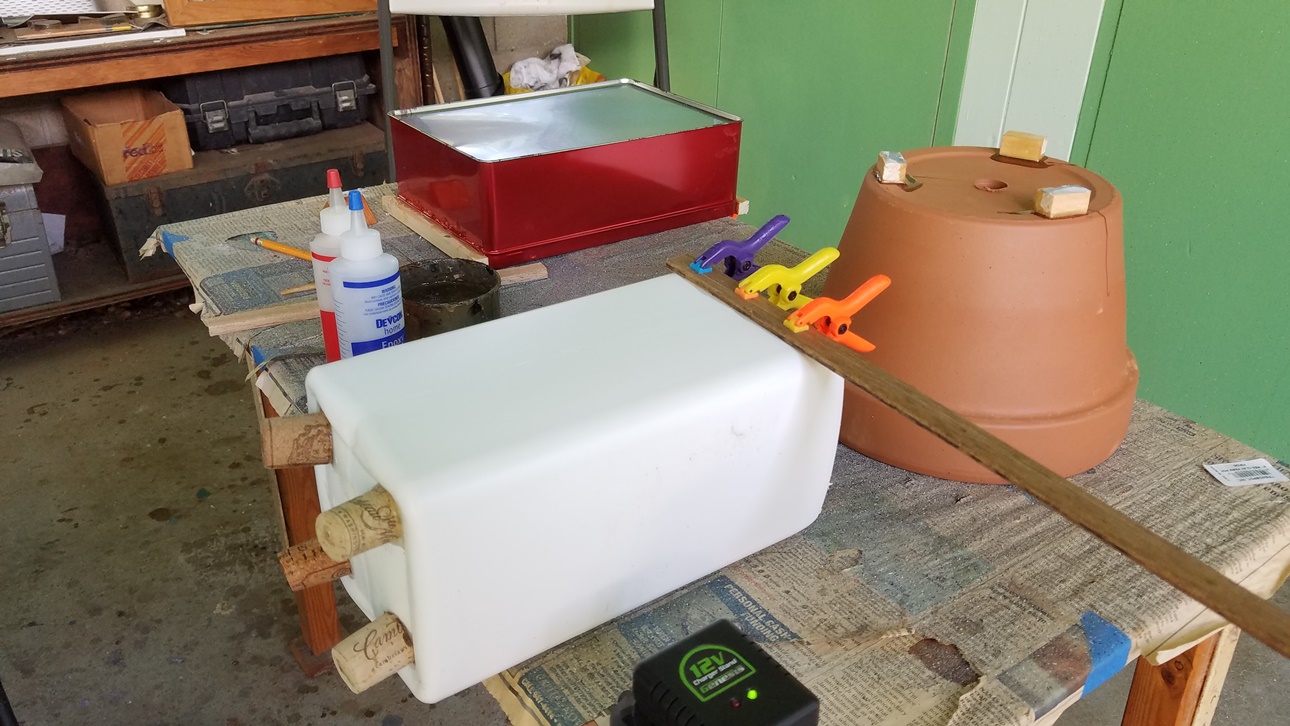
On Thursday I started working on the "poor man" bonsai pots using inexpensive materials. I used liquid exoxy (in the red and blue
plastic bottles) to glue wooden feet onto the terra cotta pot and I glued corks cut in half for feet on the white plastic fertilizer
container. Strip wood stiffeners are being bonded to the rectangular cookie tin and to the kengai pot.
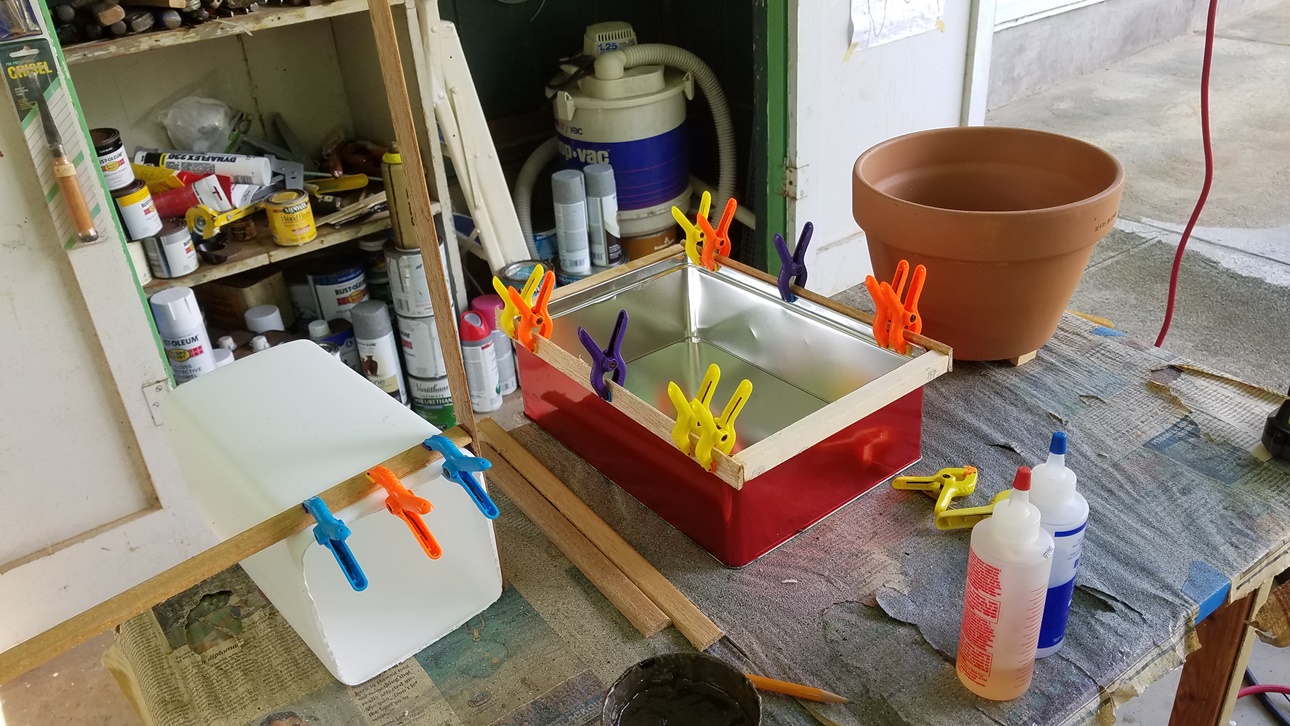
Friday: second iteration of gluing on the bonsai pots. The round pot is basically complete except for painting with stone texture.
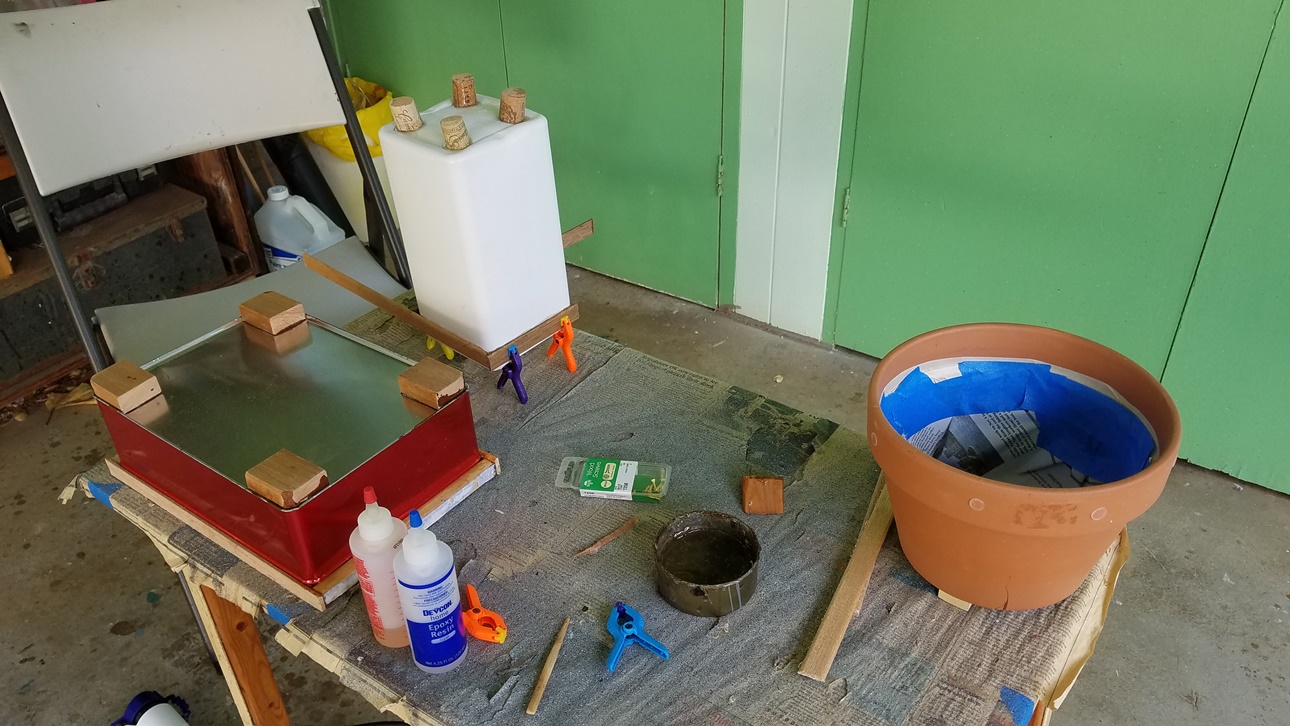
Third iteration. Wooden feet have been bonded to the cookie tin and the terra cotta pot has been masked on the inside and bottom.
This is similar to the way glazed ceramic bonsai pots from Japan are treated. Unglazed portions are left to let the pot breathe.
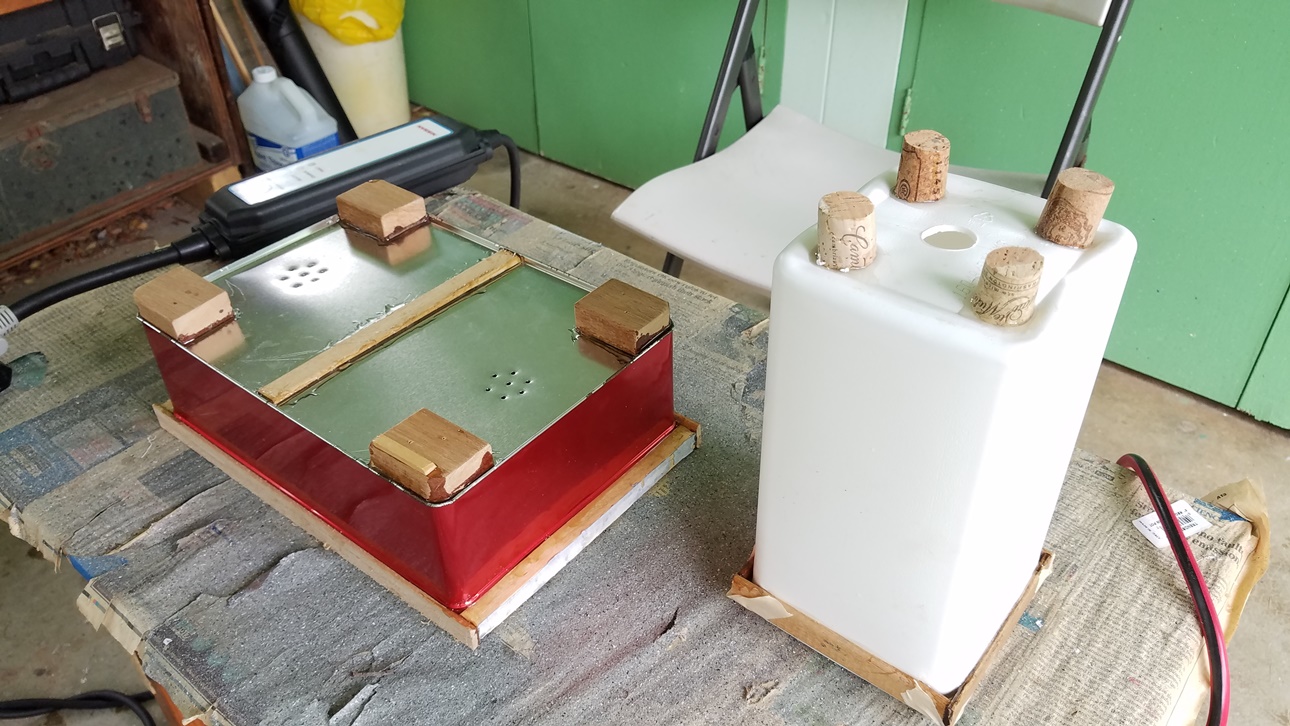
All gluing is complete and drainage holes have been drilled. I used a 1/8 inch bit for the sheet metal rectangular container and a
7/8 spade bit for a large single hole in the kengai pot. The kengai pot cork feet bottoms have been sanded to be coplanar.
Small wood screws have been used to fasten the feet from the inside of the rectangular pot.
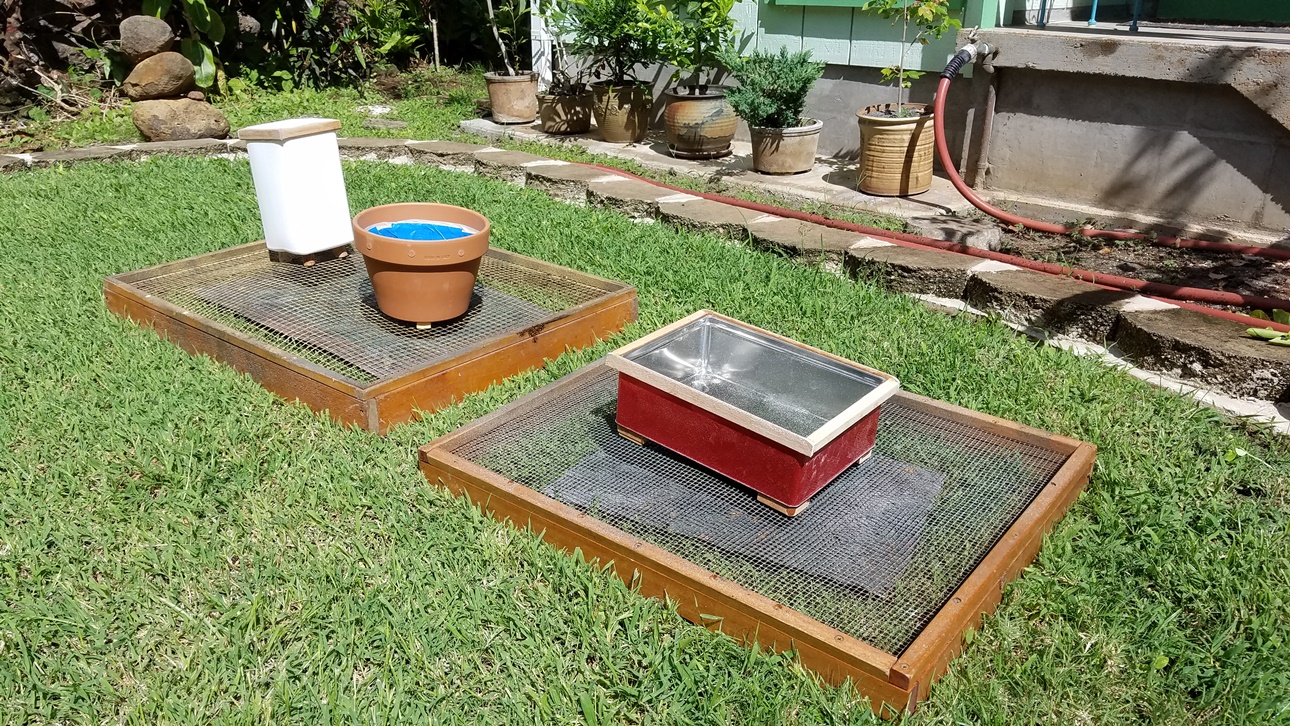
I sanded the poor man's bonsai pots and began spray painting them with gray stone textured paint. I have found that supporting the pots
on wire screens while painting works well.
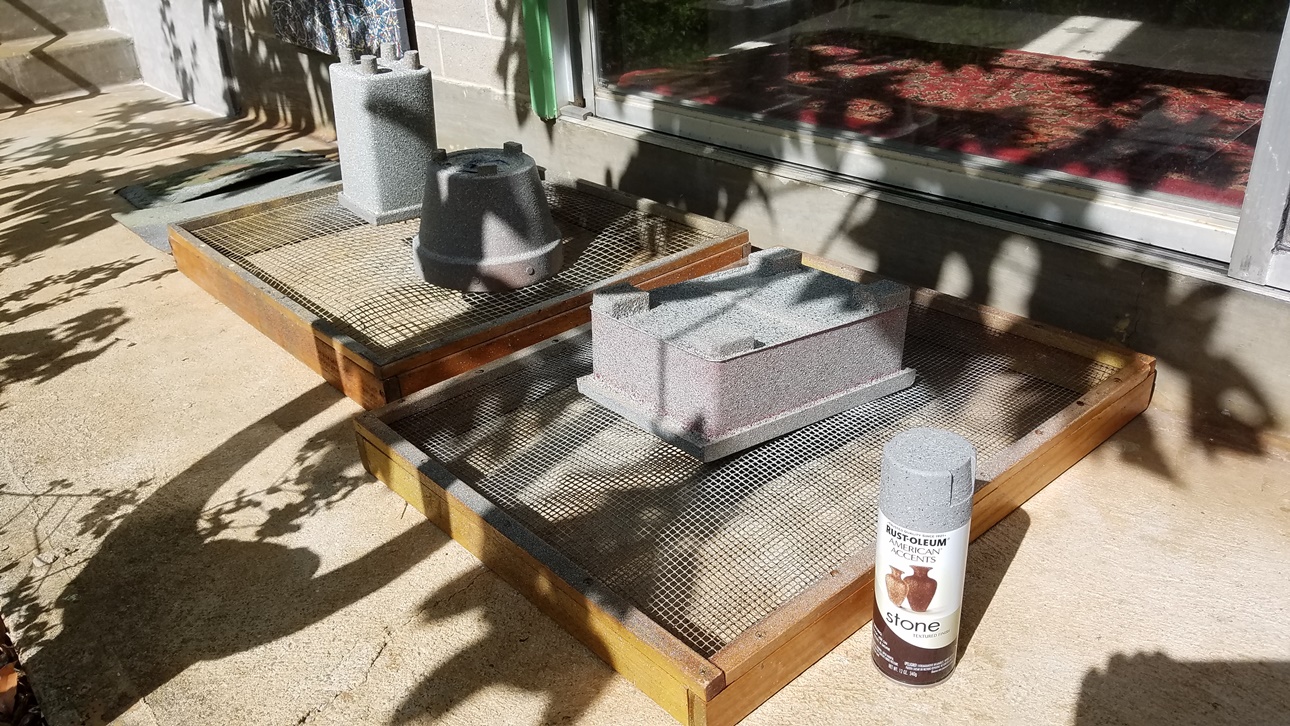
After the first coat of stone textured paint the pots are drying in the sun. The intended texture/color is shown on the spray can cap.
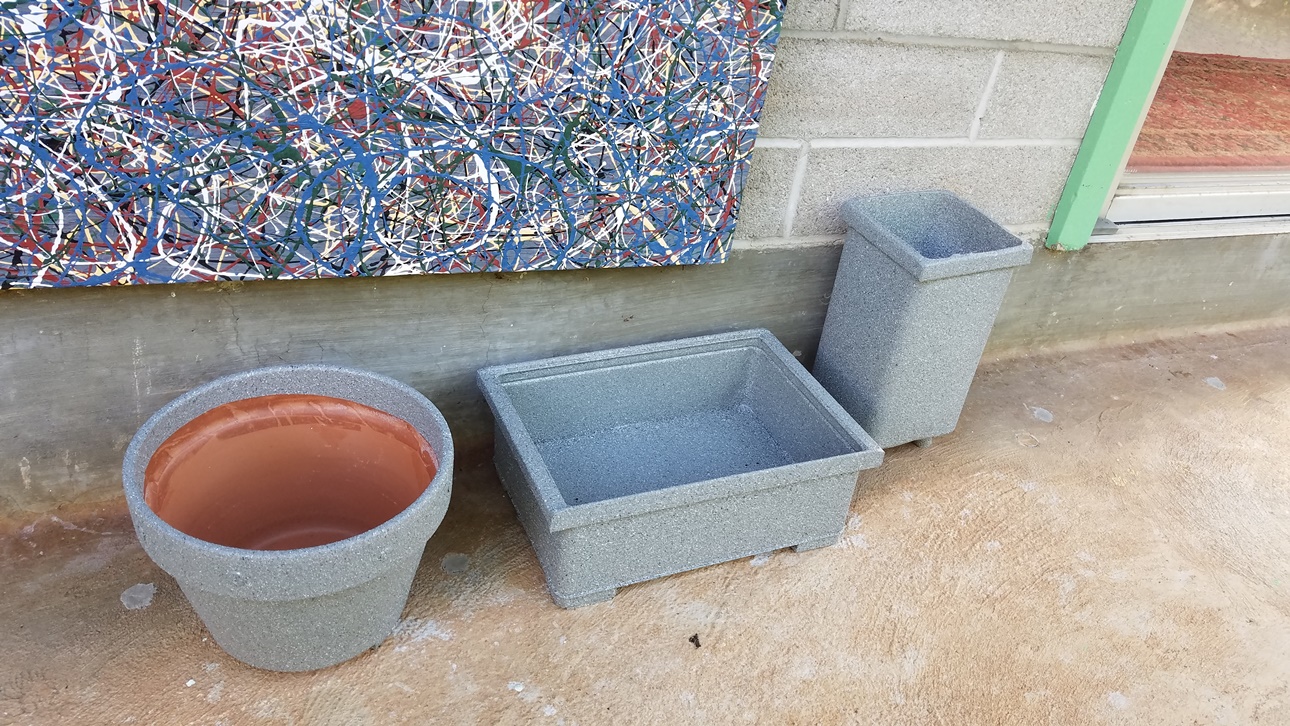
The finished bonsai pots after two coats of spray stone texture. Each iteration of upright and upside down spraying constitutes one coat
so the sides of the pots actually received four coats. Three spray cans of paint were used, making the paint the single most expensive item.
 Email Richard dot J dot Wagner at gmail dot com
Email Richard dot J dot Wagner at gmail dot com